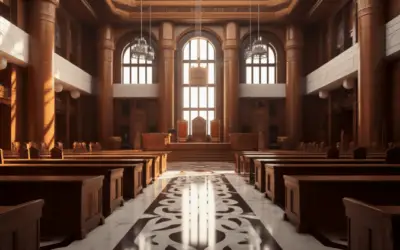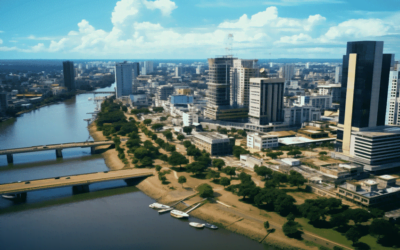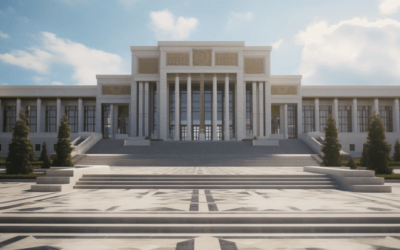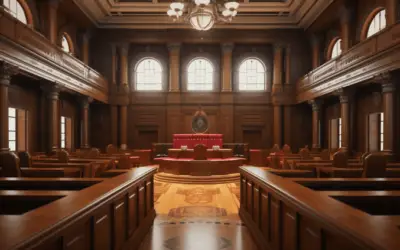Hey there, drone enthusiasts and curious minds! Ever find yourself eager to explore the skies of Armenia but get caught up in a web of drone regulations? I feel you! Navigating through the intricacies of Armenia’s drone laws can be quite a challenge, especially when you’re just getting started.
But hey, worry not! I’ve been down that road, delved deep into Armenia’s drone regulations, and untangled the complexities. So, you’re in the right place. Let me spill the beans on everything you need to know to soar into the Armenian skies with your drone.
Hold tight, because, in the next few paragraphs, I’ll share the insights and experiences I gained from my research on Armenia’s drone laws.
If you’re on the hunt for clear, concise, and up-to-date information on flying your drone legally in Armenia, you’re in for a treat. Let’s navigate this regulatory airspace together!
So, if you’re ready to elevate your drone game in Armenia and glide smoothly within the legal boundaries, keep reading. This article is your guide to conquering the skies responsibly and enjoying the breathtaking views our beautiful country has to offer!
- Drone Registration Requirements in Armenia
- Drone Categories and Regulations
- Restricted Areas and No-Fly Zones
- Altitude Limits and Flight Restrictions
- Remote Identification Systems in Armenia
- Visual Line of Sight and Flight Safety
- Privacy and Data Protection in Armenia
- Insurance Requirements for Drone Pilots
- Final Thoughts on Armenia Drone Laws
- Frequently Asked Questions
Drone Registration Requirements in Armenia

Alright, let’s dive into the first segment of our drone adventure in Armenia: Registration Requirements. This is the gateway to flying your drone legally and safely in the country. Trust me; it’s not as daunting as it may seem at first glance.
The Need for Drone Registration in Armenia
Picture this: you’re gearing up to take your drone for a spin in the stunning landscapes of Armenia. The thrill of capturing those breathtaking aerial shots is bubbling within you.
But, here’s the catch – to ensure a harmonious and secure coexistence of drones and people in the skies, the Armenian authorities have set up a registration system. This is like giving your drone an official ID.
Drone registration is like obtaining a driver’s license for your drone. It’s all about accountability. When you register your drone, you’re essentially telling the government, “Hey, I’m a responsible drone pilot, and I understand the rules.” It helps the authorities keep track of who’s flying what and where, ensuring safety, and security, and protecting the privacy of others.
Overview of the Registration Process and Necessary Documentation
So, you’re all in for registering your drone, but how do you go about it? Well, the process is reasonably straightforward, and there’s no need to break a sweat.
Usually, you’d start by visiting the Civil Aviation Committee of the Republic of Armenia which serves as the go-to hub for all things drone-related.
Once there, you’ll go through an official guiding you through the registration steps. You might need to provide some personal information, details about your drone, and proof of ownership.
It’s like filling out an application form but for your flying buddy. Remember, it’s all about ensuring the safety of your fellow Armenians in the airspace.
Weight Threshold for Registration
Now, here’s a nifty detail: Not all drones need to be registered in Armenia. The weight of your drone plays a crucial role in determining whether you should go through the registration process.
As of the last time I checked, drones weighing more than 250 grams typically require registration.
Think of it this way: if your drone is as light as a smartphone, chances are you’re in the clear. But if it’s a bit on the heavier side, just like how you need a license for a car but not for a bicycle, your drone should be registered. It’s all about balancing convenience with safety.
That’s the lowdown on drone registration in Armenia. Keep in mind that regulations can change, so always double-check the current requirements with the General Department of Civil Aviation of the Republic of Armenia (GDCA).
In the next section, we’ll explore different drone categories and the specific rules that apply to each. So, fasten your seatbelt (or propellers), and let’s go!
Also Read: Argentina Drone Laws 2024
Drone Categories and Regulations

Welcome to the next exciting chapter in our journey through Armenia’s drone laws. Once you’ve got the registration process sorted out, it’s time to explore how Armenia categorizes drones and sets specific rules and regulations for each.
This isn’t one size fits all – it’s more like tailoring a suit to your specific drone’s weight and purpose.
Categorization Based on Weight and Purpose
So, you’ve probably wondered, “What’s the deal with these drone categories?” Well, it’s all about keeping things organized in the sky. Armenian authorities categorize drones primarily based on their weight and purpose. This categorization is designed to ensure that each type of drone operates safely and responsibly.
Just imagine if all vehicles on the road were treated the same, whether they were scooters, motorcycles, or semi-trucks.
It would be chaos, right? The same logic applies to drones. By weighing your drone and assessing its intended use, authorities can place it in a specific category, allowing for appropriate rules and regulations.
Specific Rules and Regulations for Each Category
Here’s where it gets intriguing. Each drone category comes with its own set of rules and regulations.
For instance, drones used for recreational purposes might have different restrictions than those used for professional aerial photography or surveillance. This differentiation ensures that the rules align with the level of responsibility required for each category.
Think of it like having different speed limits on highways, city streets, and residential areas. The rules are tailored to the specific context. So, if you’re aware of your drone’s category, you can easily find the guidelines that pertain to your situation, making it simpler to abide by the law and fly safely.
Compliance Requirements for Operators Based on Drone Category
Now, let’s talk about you, the drone operator. Your responsibilities and compliance requirements can vary based on the category your drone falls into.
If you’re flying a heavier or more advanced drone, you might need to meet additional conditions, like obtaining specific licenses or approvals. It’s like needing a different driver’s license for a car and a motorcycle.
The key here is to be well-informed about your drone’s category and the related compliance requirements.
It ensures that you’re not only having a blast while flying but also doing so in a way that respects the law and the safety of others. Remember, knowledge is power when it comes to drone operations in Armenia, and it’s all about making informed choices.
Stay with us as we uncover more about drone laws in Armenia. In the next section, we’ll venture into restricted areas and no-fly zones, and how to navigate these airspace constraints like a pro.
Also Read: Antigua and Barbuda Drone Laws 2024
Restricted Areas and No-Fly Zones

Now, let’s explore a critical aspect of Armenia’s drone laws – restricted areas and no-fly zones.
These are the virtual stop signs in the airspace, and it’s crucial to know where they are and why they exist. They’re like invisible fences that keep your drone from wandering into sensitive territories.
Description of the Areas Where Drone Flights are Restricted
Imagine this: you’re all set for a fantastic drone flight, and then you see it on your drone’s app – a restricted zone.
What are these areas, you ask? Restricted zones are specific locations where drone flights are prohibited or significantly restricted. These could include government buildings, military installations, airports, and other places that require enhanced security and privacy.
The authorities don’t just randomly pick spots to restrict drone flights. These areas are carefully chosen to safeguard sensitive facilities, ensure public safety, and respect the privacy of individuals.
Flying a drone in these areas could compromise security or infringe on someone’s privacy, so it’s essential to know where they are.
Explanation of the Reasons for These Restrictions
But why all the fuss about restricted areas? It boils down to safety and security. Let me paint a scenario for you: Imagine your drone accidentally crashes near a military installation or a critical infrastructure site. It could lead to confusion, and security concerns, and potentially have severe consequences.
These restrictions are in place to avoid such situations and ensure that drones don’t inadvertently interfere with critical operations. The no-fly zones are there for good reasons, and it’s crucial to respect and adhere to these regulations to prevent any mishaps.
Penalties for Violating Restricted Area Regulations
Now, let’s talk about the consequences. Violating restricted area regulations can lead to penalties, and they’re not to be taken lightly.
These penalties could include fines, confiscation of your drone, or even legal actions. It’s like getting a hefty speeding ticket for zooming through a school zone – the consequences are steep, and it’s not worth the risk.
So, the golden rule here is to check for restricted areas and no-fly zones before you take off. Many drones have built-in features that prevent you from flying in these zones. Always respect these regulations, and you’ll be soaring the Armenian skies without any hiccups.
Next, we’ll uncover the altitude limits for drone flights and the safety measures to consider while exploring the skies.
Also Read: Angola Drone Laws 2024
Altitude Limits and Flight Restrictions

Now, let’s take our drone adventures to new heights – quite literally. Altitude limits and flight restrictions are essential puzzle pieces in Armenia’s drone laws. Understanding these not only keeps you in compliance but also ensures safety and security in the skies above.
Explanation of Altitude Limits for Drone Flights
Ever wondered how high your drone can soar in Armenia’s airspace? Well, there’s a maximum altitude set for drone flights. This limit is usually above ground level, meaning the altitude is measured from the surface of the Earth, not from where you’re standing.
Think of it like the maximum speed limit on a highway. It’s there to keep things safe and orderly. By having an altitude limit, you’re less likely to interfere with manned aircraft or breach sensitive airspace. So, understanding and adhering to these limits is crucial for a smooth and safe flight.
Safety Reasons Behind Altitude Restrictions
The logic behind altitude restrictions is straightforward: safety first. Drones share the sky with manned aircraft like planes and helicopters. To prevent accidents and maintain clear and predictable paths for all aircraft, having altitude restrictions is a must.
Imagine this scenario: if drones could fly at any altitude, it would be like having cars driving on the same road as airplanes.
Chaos, right? Altitude limits ensure that drones stay in their designated lanes, so to speak, while aircraft with humans aboard can cruise safely in their designated zones.
Special Considerations for Specific Locations or Events
Now, here’s a twist. In certain locations or during specific events, there might be temporary restrictions or adjusted altitude limits. This is akin to slowing down in construction zones on the highway.
During special events, like festivals or security-sensitive occasions, authorities might impose flight restrictions to ensure public safety and event success.
So, always stay informed about these temporary restrictions, and if you plan to fly your drone in specific areas or during events, check for any special considerations. It’s all about maintaining a balance between enjoying your drone and respecting the safety and security of everyone in the airspace.
In the upcoming section, we’ll talk about remote identification for drones and why it’s a crucial aspect of responsible flying.
Also Read: Andorra Drone Laws 2024
Remote Identification Systems in Armenia

Now, we’re stepping into the world of remote identification systems for drones. It’s like having a digital license plate in the sky, and it plays a vital role in making drone flights safer and more accountable. Let’s dive in and uncover the essence of this technology.
Importance of Remote Identification for Drones
Imagine being on a busy road without any license plates on vehicles. Chaos, right? Remote identification serves as that virtual license plate for drones. It’s all about transparency and accountability in the skies.
This technology allows authorities and fellow operators to identify your drone, which is essential for safety and security.
The importance of remote identification goes beyond accountability; it’s about ensuring the safety of people and property on the ground. It’s like having a digital fingerprint for your drone, making it easier for authorities to trace it back to you if something goes wrong.
So, when you’re flying your drone in Armenia, think of it as your drone’s way of saying, “I’m here, and I’m flying responsibly.”
Explanation of the Technology and Its Benefits
Remote identification isn’t a complex, futuristic concept. It’s a technology that equips your drone with a unique ID transmitted during flight.
This ID contains information about your drone and its operator, allowing authorities to quickly identify it. The benefits are plenty, from enhancing safety to simplifying law enforcement.
Think of it as your drone wearing a name tag. It introduces itself to the airspace and the world below.
This digital name tag makes it easier for everyone to distinguish between responsible drone pilots and those who may not be following the rules. In case of any issues, it can also help authorities take appropriate actions swiftly.
Compliance Requirements for Operators Regarding Remote Identification
As a drone operator, it’s crucial to comply with remote identification requirements. These requirements can vary, and you might need to ensure that your drone is equipped with the necessary technology.
Compliance ensures you’re part of the solution, not the problem when it comes to drone safety and accountability.
Consider it as part of your pre-flight checklist. Just like you’d ensure your drone’s batteries are charged, make sure your remote identification is up and running. It’s about being a responsible member of the drone community and helping to maintain a safe and secure aerial environment.
Also Read: Algeria Drone Laws 2024
Visual Line of Sight and Flight Safety

Now, let’s talk about a fundamental aspect of flying drones in Armenia – maintaining a visual line of sight (VLOS). Think of this as your visual lifeline to your drone. It’s all about keeping things in view and ensuring safety in the skies.
Definition and Importance of Maintaining Visual Line of Sight
Visual line of sight is exactly what it sounds like – keeping your drone within your line of sight at all times while flying. It’s like driving your car with a clear view of the road ahead.
This simple practice ensures that you can see and react to any obstacles, other aircraft, or changes in your drone’s behavior quickly.
Why is this so important? Well, imagine trying to steer a boat in thick fog with no visibility. It’s a recipe for disaster.
The same goes for drones. Maintaining visual contact with your drone ensures that you have control over its movements and can respond to any issues promptly. It’s the cornerstone of safe and responsible flying.
Regulations Concerning Nighttime Flights and BVLOS Operations
While flying during the day is relatively straightforward, nighttime flights and beyond visual line of sight (BVLOS) operations require special consideration. Armenia’s drone laws typically restrict nighttime flights unless you have proper lighting and permission.
Flying beyond your visual line of sight, like sending your drone down the block, can be complex. BVLOS operations may require additional permissions and safety measures.
Just like how driving at night often requires extra precautions and awareness, BVLOS drone operations need careful planning to ensure safety.
Safety Measures for Operators to Enhance Flight Safety
Safety is a top priority when it comes to drone flights. Whether it’s ensuring your drone is well-maintained or using GPS for added stability, there are plenty of safety measures you can take as a responsible operator. It’s like putting on your seatbelt before driving – it’s a small action that can make a big difference in safety.
Another critical aspect is understanding the weather. Just like you wouldn’t go swimming during a thunderstorm, it’s vital to check weather conditions before taking your drone to the skies. High winds or stormy weather can spell trouble for your drone.
In essence, maintaining a visual line of sight and practicing flight safety is about being a responsible drone pilot. In the next section, we’ll delve into the importance of respecting privacy and data protection while flying your drone in Armenia.
Also Read: Albania Drone Laws 2024
Privacy and Data Protection in Armenia

When it comes to drone operations, respecting privacy and data protection is paramount. Just like you’d expect your personal space to be respected, it’s crucial to ensure that your drone flights don’t infringe on others’ privacy.
Overview of Privacy Laws Applicable to Drone Operations
Armenia, like many countries, has privacy laws in place to safeguard the rights of its citizens. These laws often extend to drone operations.
The idea is to ensure that individuals’ privacy is protected, even from aerial intrusion. So, it’s not just about the physical presence of the drone but also how it’s used and what it captures.
Think of it like having curtains in your home. You expect your privacy to be maintained, whether it’s from the street or the sky. The same principle applies when you’re operating a drone.
Responsibilities of Operators Regarding Privacy and Data Protection
As a responsible drone operator, it’s your duty to understand and abide by these privacy laws. You’re not just flying a drone; you’re a steward of the skies.
You need to be aware of the legal and ethical aspects of privacy and data protection, much like how a lifeguard watches over swimmers.
This responsibility includes ensuring that you don’t capture images or videos of people without their consent in situations where they have a reasonable expectation of privacy. It’s about being considerate and respectful while enjoying your drone hobby.
Obtaining Consent and Respecting Individuals’ Privacy During Flights
One way to navigate the privacy minefield is to obtain consent when necessary. If you plan to capture images or videos that may infringe on someone’s privacy, it’s often a good practice to ask for their consent.
Imagine it as if you were taking photos at a family gathering – you’d ask for permission before clicking away.
Respecting individuals’ privacy during flights is essential. Just because you have a bird’s-eye view doesn’t mean you can disregard their personal space. It’s a delicate balance between enjoying your drone and respecting the privacy of others.
In the final section, we’ll wrap up our journey through Armenia’s drone laws and leave you with some parting words of wisdom to ensure your drone flights are both enjoyable and compliant.
Also Read: Afghanistan Drone Laws 2024
Insurance Requirements for Drone Pilots

Now, let’s talk about something essential – insurance requirements for drone operators. Just like you’d want insurance for your car or home, it’s crucial to have coverage for your drone adventures to ensure responsible operation.
Liability Insurance for Drone Operators
Liability insurance is like a safety net for your drone operations. It’s there to cover you in case of accidents or damages caused by your drone. If you accidentally crash your drone into someone’s property or, heaven forbid, injure someone, liability insurance can step in to cover the costs.
Imagine it as a protective shield that ensures you’re financially prepared for the unexpected. Just like how you’d want car insurance in case of a traffic accident, drone liability insurance is your backup when things don’t go as planned.
Minimum Insurance Coverage Requirements Based on Drone Size and Purpose
The insurance requirements aren’t one-size-fits-all. They depend on your drone’s size and intended use. Just like how a sports car and a family minivan may have different insurance coverage, drones have specific requirements.
For instance, drones used for commercial purposes or those above a certain weight might need higher coverage. These requirements ensure that drone operators are financially responsible for any potential damages they might cause. It’s about being accountable and prepared for the unexpected.
Ensuring Responsible Operation and Coverage for Potential Accidents
Having insurance isn’t just about complying with regulations; it’s about ensuring responsible operation. It’s like having a safety net when you’re doing acrobatics on a trampoline. You hope you won’t fall, but you’re ready if you do.
Accidents happen, and when they do, you want to make sure that you’re covered and that you’re not leaving someone else to deal with the consequences. It’s all part of being a responsible drone operator, ensuring that your flights are enjoyable, safe, and accountable.
As we wrap up our exploration of Armenia’s drone laws, remember that staying informed, respecting regulations, and prioritizing safety can lead to a fantastic drone-flying experience. So, keep these guidelines in mind, and enjoy the skies responsibly!
Final Thoughts on Armenia Drone Laws

As our journey through Armenia’s drone laws comes to an end, let’s take a moment to reflect on the key takeaways. Understanding and adhering to these regulations isn’t just about following the rules; it’s about ensuring safety, respecting privacy, and fostering responsible drone use.
In this article, we’ve uncovered a wealth of information about Armenia’s drone laws. From registration requirements and categorization based on weight and purpose to respecting restricted areas and no-fly zones, maintaining visual line of sight, and ensuring privacy and data protection, these regulations are like road signs guiding your drone adventures.
We’ve highlighted the importance of remote identification, insurance coverage, and compliance with privacy laws. It’s a comprehensive set of guidelines designed to ensure that you, as a drone operator, enjoy the skies responsibly and with accountability.
In closing, it’s crucial to stress the significance of adhering to these drone laws. Just as you’d respect traffic signals and speed limits on the road, respecting drone regulations in Armenia is about safety, privacy, and responsible use. It’s about making sure that your drone flights are enjoyable not only for you but also for those on the ground.
By following these guidelines, you’re contributing to a safer and more harmonious drone community.
You’re ensuring that your flights are not only compliant with the law but also respectful of the rights and safety of others. Think of it as being a good neighbor in the sky – a responsible and considerate drone pilot.
So, as you embark on your next drone adventure in Armenia, keep these regulations in mind. Stay informed, fly responsibly, and enjoy the breathtaking views while contributing to a safer and more enjoyable drone-flying environment. Happy flying!
Frequently Asked Questions
1. FAQ: Do I need to register my drone in Armenia?
Answer: Yes, drone registration is mandatory in Armenia. Depending on the weight and purpose of your drone, it will fall into a specific category, and you must complete the registration process. This helps authorities ensure safe and responsible drone operations.
2. FAQ: What are the altitude limits for drone flights in Armenia?
Answer: Armenia has set altitude limits for drone flights. These limits vary depending on the drone’s purpose and size. Keeping your drone within the specified altitude range ensures safety and compliance with the law.
3. FAQ: Can I fly my drone at night in Armenia?
Answer: Flying your drone at night in Armenia is allowed, but specific conditions must be met. You should have proper lighting on your drone to maintain visibility, and you may require permission for nighttime flights to ensure safety.
4. FAQ: Do I need liability insurance for my drone in Armenia?
Answer: Yes, liability insurance is essential for drone operators in Armenia. It serves as a financial safety net in case of accidents or damages caused by your drone. The coverage requirements depend on your drone’s size and intended use.
5. FAQ: How can I respect individuals’ privacy while flying my drone in Armenia?
Answer: Respecting privacy is crucial. Operators should be aware of Armenia’s privacy laws, which extend to drone operations. It’s important to obtain consent if you plan to capture images or videos that may infringe on someone’s privacy. Adhering to privacy regulations ensures responsible and considerate drone use.













